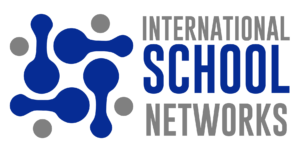Introduction
In today’s globalized world, parents and students often face the complex decision of selecting the most suitable international curriculum for their educational journey. The choices are abundant, ranging from the International Baccalaureate (IB) and the Cambridge International Curriculum to the American Curriculum, French Baccalaureate (Bac), Indian Curriculum, and Chinese Curriculum, among others. Each of these curricula offers unique features, philosophies, and advantages. To help you make an informed choice, this comprehensive guide will compare and contrast different international curricula.
International Baccalaureate (IB)
The International Baccalaureate (IB) program is renowned for its global perspective and emphasis on holistic education. It is designed to foster inquiring, knowledgeable, and caring young minds. The IB curriculum is divided into three main programs:
- Primary Years Programme (PYP) b. Middle Years Programme (MYP) c. Diploma Programme (DP)
Philosophy and Pedagogy: The IB curriculum is guided by a philosophy that encourages students to become active, compassionate, and lifelong learners. It places a strong emphasis on critical thinking, inquiry-based learning, and intercultural understanding.
Curriculum Structure:
PYP: Focuses on students aged 3 to 12 and offers a transdisciplinary curriculum.
MYP: Aimed at students aged 11 to 16 and provides a well-rounded education with a focus on inquiry.
DP: Designed for students aged 16 to 19 and offers a challenging pre-university program.
Assessment and Grading: The IB curriculum incorporates various forms of assessment, including exams, coursework, and oral presentations. Students are awarded a final score out of 45 points in the DP, which includes scores for each subject, the Extended Essay, Theory of Knowledge (TOK), and Creativity, Activity, Service (CAS).
Language of Instruction: English is the primary language of instruction, although multilingualism is encouraged.
Global Recognition: The IB curriculum is widely recognized and accepted by universities worldwide. It is known for its rigorous academic standards and emphasis on well-roundedness.
Extracurricular Activities: IB programs include the Creativity, Activity, Service (CAS) component, which encourages students to engage in extracurricular and community service activities.
Cultural Sensitivity: The IB curriculum promotes cultural understanding and international-mindedness, making it an excellent choice for students seeking a global perspective.
Career and College Readiness: The DP in particular prepares students for the academic challenges of university life and fosters critical thinking skills.
Cambridge International Curriculum (CIE)
The Cambridge International Curriculum, offered by the University of Cambridge, is known for its rigorous academic standards and subject-specific focus.
Philosophy and Pedagogy: The Cambridge curriculum emphasizes subject-specific knowledge and independent thinking. It provides a strong foundation in various subjects.
Curriculum Structure:
Checkpoint: Designed for students aged 11 to 14 as a preparation for the IGCSE.
IGCSE (International General Certificate of Secondary Education): Offers a wide range of subjects and is typically completed by students aged 14 to 16.
A-levels: A rigorous program for students aged 16 to 18 that focuses on specialized subjects.
Assessment and Grading: Cambridge assessments are predominantly exam-based, with practical components in some subjects. Students receive grades for their performance.
Language of Instruction: English is the primary language of instruction.
Global Recognition: The Cambridge curriculum is recognized by universities worldwide, especially in the United Kingdom, where it is highly regarded.
Extracurricular Activities: The emphasis on extracurricular activities can vary depending on the institution offering the curriculum.
Cultural Sensitivity: The curriculum is relatively neutral in terms of cultural content, focusing more on academic subjects.
Career and College Readiness: The Cambridge curriculum prepares students well for academic challenges, making it a good choice for those seeking strong subject-specific knowledge.
American Curriculum
The American Curriculum, followed by many schools in the United States and abroad, offers a broad-based education with a focus on individualism and critical thinking.
Philosophy and Pedagogy: The American Curriculum encourages independent thinking, creativity, and a comprehensive education.
Curriculum Structure:
K-12 system with a strong focus on core subjects like English, math, science, and social studies.
Students have elective choices to explore their interests.
Assessment and Grading: Assessment methods in the American Curriculum vary, with a strong emphasis on standardized testing, such as the SAT and ACT, in high school.
Language of Instruction: English is the primary language of instruction.
Global Recognition: The American Curriculum is recognized by universities globally, especially in the United States.
Extracurricular Activities: Extracurricular involvement is strongly encouraged and plays a significant role in the American educational experience.
Cultural Sensitivity: While it encourages cultural awareness, the curriculum can be American-centric in terms of content.
Career and College Readiness: The American Curriculum effectively prepares students for American higher education, emphasizing soft skills and a well-rounded education.
French Baccalaureate (Bac)
The French Baccalaureate, known as Bac, is the national secondary school diploma in France and is offered at French international schools worldwide.
Philosophy and Pedagogy: The Bac emphasizes a comprehensive education with a focus on critical thinking and academic rigor.
Curriculum Structure:
Divided into the baccalauréat général (general) and baccalauréat technologique (technical).
Students choose a major area of study within the general stream, such as literature, science, or economics.
Assessment and Grading: The Bac includes final exams with both oral and written components.
Language of Instruction: French is the primary language of instruction.
Global Recognition: While the Bac is recognized by universities in France and some internationally, its recognition may vary depending on the country and institution.
Extracurricular Activities: The Bac curriculum typically places less emphasis on extracurricular activities compared to other international curricula.
Cultural Sensitivity: The Bac is deeply rooted in French culture and language.
Career and College Readiness: The Bac effectively prepares students for French higher education.
Indian Curriculum (CBSE, ICSE, IB, etc.)
The Indian Curriculum offers various boards, such as the Central Board of Secondary Education (CBSE), the Indian Certificate of Secondary Education (ICSE), and the International Baccalaureate (IB), catering to diverse educational needs.
Philosophy and Pedagogy: The philosophy and pedagogy vary by board but often emphasize academic rigor.
Curriculum Structure:
K-12 system with varying subject choices and curricular approaches.
Different boards offer different curricula, ranging from highly standardized to more flexible options.
Assessment and Grading: Assessment methods vary by board, including board exams, school-based exams, and continuous assessment.
Language of Instruction: English is often used as the medium of instruction, but regional languages may also be used.
Global Recognition: Indian curricula are recognized by universities globally, making them suitable for students pursuing higher education abroad.
Extracurricular Activities: The extent of extracurricular activities may vary depending on the school and board.
Cultural Sensitivity: Indian curricula are infused with Indian cultural elements.
Career and College Readiness: Indian curricula effectively prepare students for Indian and international universities, fostering a strong academic foundation.
Chinese Curriculum (Including Gaokao)
The Chinese Curriculum, centered around the Gaokao college entrance exam, places a strong emphasis on discipline, hard work, and mastery of core subjects.
Philosophy and Pedagogy: The Chinese Curriculum emphasizes strict discipline and mastery of core subjects.
Curriculum Structure:
K-12 system with a strong focus on math and science.
Limited elective choices compared to some other curricula.
Assessment and Grading: The Gaokao is a high-stakes, standardized college entrance exam that plays a pivotal role in students’ academic lives.
Language of Instruction: Chinese (Mandarin) is the primary language of instruction.
Global Recognition: The Chinese Curriculum is primarily recognized within China, with limited recognition internationally.
Extracurricular Activities: Extracurricular involvement and soft skills development are not emphasized to the same extent as in some other curricula.
Cultural Sensitivity: The curriculum is deeply rooted in Chinese culture and language.
Career and College Readiness: The Chinese Curriculum effectively prepares students for Chinese universities and places a strong emphasis on academic achievement.
Conclusion
In the quest to select the right international curriculum, it’s essential to consider the unique features and philosophies of each. The International Baccalaureate (IB) offers a global perspective and holistic education. The Cambridge International Curriculum focuses on subject-specific knowledge and independent thinking. The American Curriculum encourages a broad-based education and individualism. The French Baccalaureate (Bac) emphasizes academic rigor and critical thinking. The Indian Curriculum provides various options to suit diverse educational needs. The Chinese Curriculum, centered around the Gaokao, places a strong emphasis on discipline and core subjects.
Ultimately, the choice of an international curriculum should align with the student’s educational goals, interests, and cultural background. Additionally, considering future aspirations, such as university admission requirements, is crucial. By carefully evaluating the strengths and weaknesses of each curriculum, parents and students can make an informed decision that paves the way for a successful educational journey.



